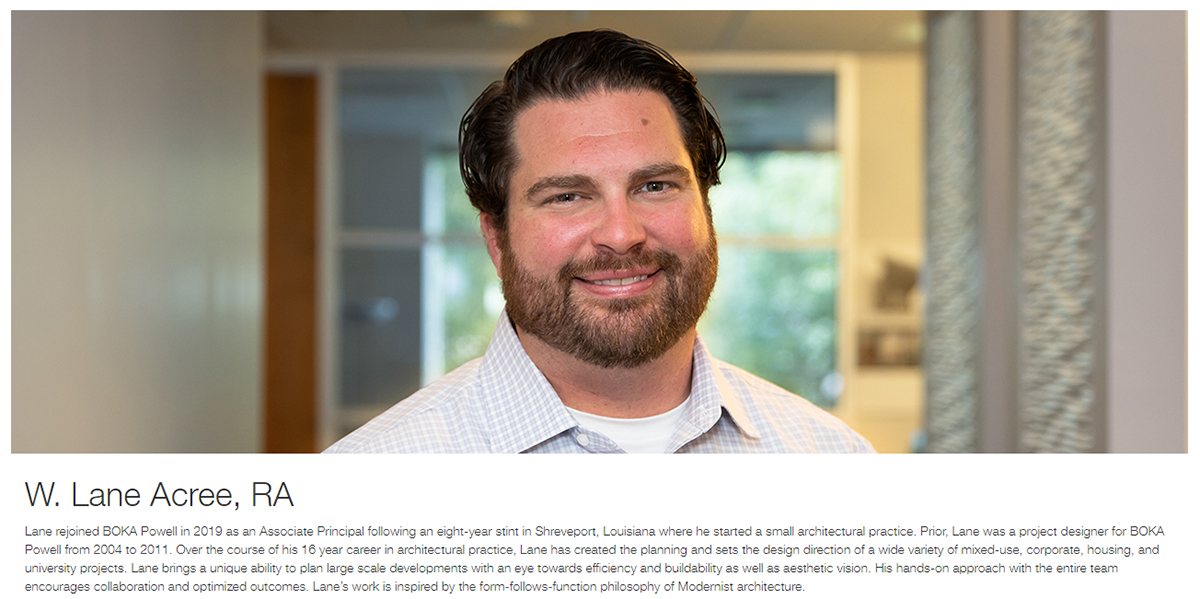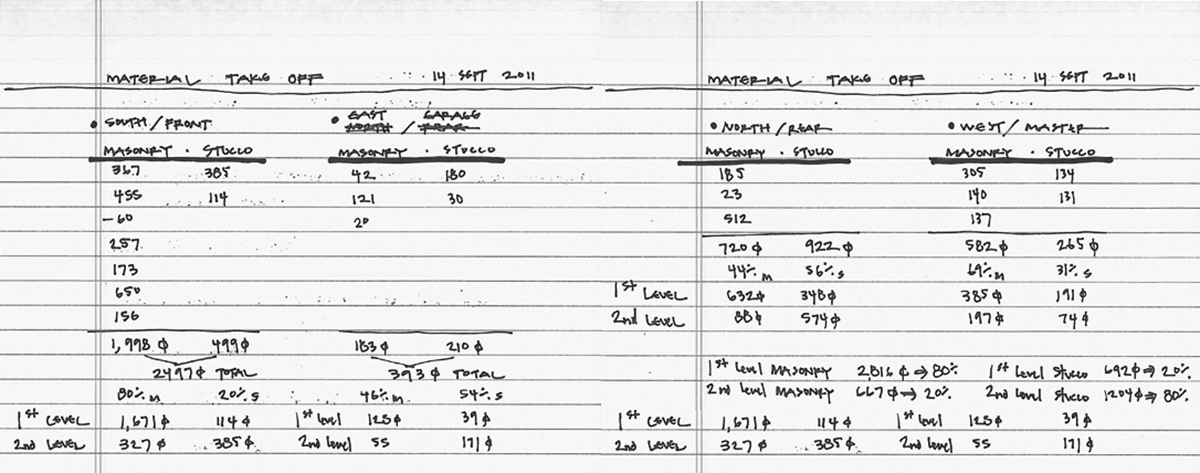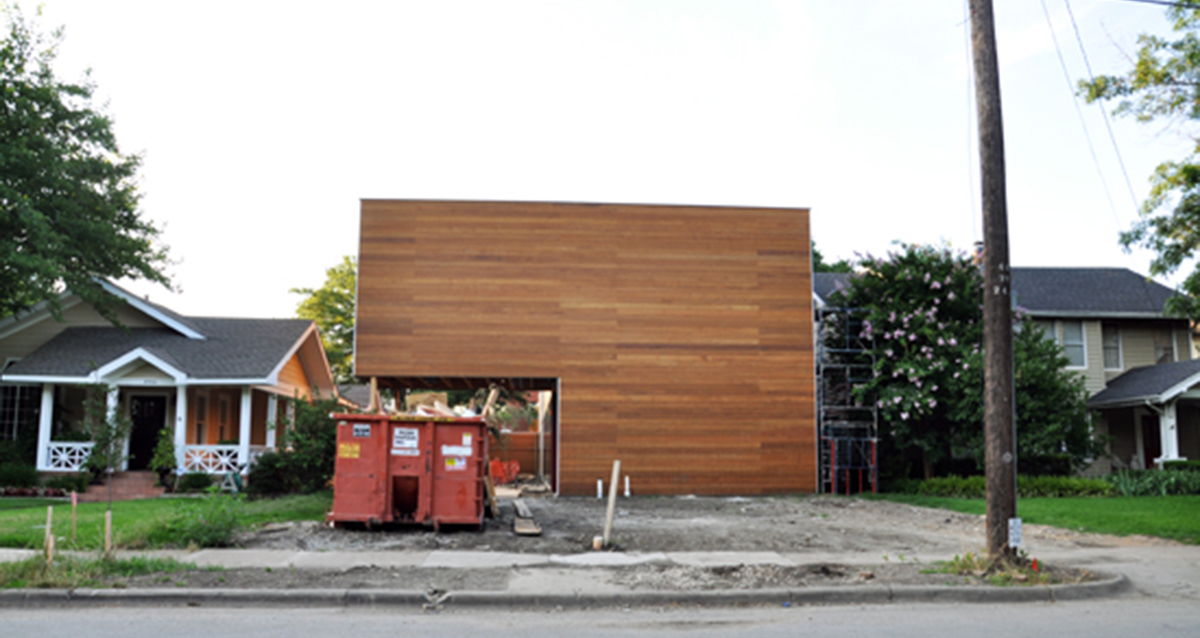The architectural theory of contextual architecture, often referred to as “contextualism” asserts that built items should be in response to the literal and abstract components in the environment in which it is built. In 1988, Architect Philip Johnson and Mark Wigley denounced this philosophy, stating “contextualism has been used as an excuse for mediocrity, for a dumb servility to the familiar”, whereas Rem Koolhaas was more to the point and simply said “F*!k context”. Sound exciting? Welcome to EP 127: Context and Design
[Note: If you are reading this via email, click here to access the on-site audio player] Podcast: Embed Subscribe: Apple Podcasts | Spotify | Android | iHeartRadio | TuneIn
I have a guest on today’s episode as I was discussing this topic with a co-worker and 2-time Life of an Architect podcast guest Lane Acree, and he had some opinions to share so I asked him to join in the conversation.

Lane is a Principal and Senior Project Designer at BOKA Powell, and has the (mis)fortune of sitting next to me in the office. We also both started at the same time (even though Lane worked at BOKA Powell years ago before he moved back to Shreveport, Louisiana to be closer to family) so we have both gone through a similar indoctrination experience over the last few years. This experience has led us to connect with one another to discuss and share thoughts about all different sorts of things and so when I needed someone to help out on the podcast, he seems like an obvious and natural choice. It also doesn’t hurt that we also have similar personalities and are amused by the same things, including a love of crafting cocktails for our coworkers on Friday afternoons.
So let’s get into it …

Introduction to Contextualism jump to 2:39
There is a good article published online by Esin Komez-Daglioglu who is an assistant professor in the Department of Architecture, Delft University of Technology, Delft, The Netherlands that gives a concise albeit highly academic breakdown on what contextualism is and how it fits within a society.
In the 1980s, contextualism was mainly associated with conformity and visual compatibility with the surrounding built environments. Possibly a reactionary position to modernism’s disregard for context, it’s a break from the past, and the doctrine of the “spirit of times.”
In 1988, avant-garde architects came together in the Museum of Modern Art’s (MOMA’s) Deconstructivist Architecture Exhibition to attack postmodernism and its contextualism. Curators Philip Johnson and Mark Wigley asserted that “contextualism has been used as an excuse for mediocrity, for a dumb servility to the familiar”. By way of contrast, they argued, their avant-garde architecture was critically distant from any authority claimed by the context of an architectural object.
The Deconstructivist Architecture exhibition in MOMA hosted the works of Coop Himmelb(l)au, Peter Eisenman, Frank Gehry, Zaha Hadid, Rem Koolhaas, Daniel Libeskind, and Bernard Tschumi, who are labeled today as starchitects, figures known globally for their iconic buildings designed as detached spectacular objects celebrating architecture’s deterritorialization.
Origins and Aesthetic jump to 11:55
- Should a thing look like it is from a particular place?
I wrote a post titled Modern House Friendly Neighbor was written in June 2010 and I thought I was going to get in trouble. In fact, my employers at the time expressed some concern over that article. The question that I wanted to discuss in that article was “if this house [or building in general] or architects have a responsibility to the surrounding environment where our projects are located?
We discuss the context of this project – scale, design style is extremely modern and the houses to either side are 1920’s era craftsman bungalows.
- Should a house look like its neighbors?
- HOA – the rights of the homeowner and being able to do what you want versus restrictions to look like everyone else.
- in 2010 the lot was appraised at $617K and I check today and that same lot is now appraised at $2.3M
- The house to the left in 2010 lot was also appraised at $617k and as of today, is now at $1.8M. Lot sizes are the same.
There is also the discussion centered around architects such Lake Flato / Richard Meier / Zaha Hadid etc. where there is a clearly identifiable “house style”. The firm Lake | Flato is a firm essentially in my backyard geographically and I have been aware of them since I interviewed to work there back in 1992. Their work is exceptional and highly recognizable and there is no doubt that they have a style that was born out of regionalism which has broad appeal and the people that hire them know exactly what look they will be getting.

Form-Based Zoning jump to 32:24
Form-Based Zoning exists in a lot of places and its appeal and utilization appear to be expanding. Zoning typically addresses land use and how space is allocated from a size and density perspective, but Form-based zoning – according to the Form-Based Codes Institute – is defined as a land development regulation that fosters predictable built results and a high-quality public realm by using physical form (rather than separation of uses) as the organizing principle for the code.
Sticking with FBCI there are Five Main Elements of Form-Based Codes:
- Regulating plan – A plan or map of the regulated area designating the locations where different building form standards apply.
- Public Standards – Specify elements in the public realm: sidewalk, travel lanes, on-street parking, street trees and furniture, etc.
- Building Standards – Regulations controlling the features, configurations, and functions of buildings that define and shape the public realm.
- Administration – A clearly defined and streamlined application and project review process.
- Definition – A glossary to ensure the precise use of technical terms.
Under “Additional Optional Elements” you will find Architectural Standards (Regulations controlling external architectural materials and quality).
Conceptually, I don’t have major issues with form-based zoning, but its philosophical tenets are rarely executed in a way that creates better architecture … at best it seems to limit bad or cheap architectural solutions.

What the Rank jump to 55:51
We are going to pivot again and revisit a “What’s the Rank” to end today’s show. And since Lane is one of the people I run these questions past, I know that he knows how they work … basically, Lane will go first and then Andrew and I will make fun of him for his terrible answers.
Today we are ranking [drum roll please] ….
The Worst Three Types of Egg Preparation
| #3 | #2 | #1 | |
| Lane’s Worst Type of Egg Prep | Poached | Over Hard | Soft Boiled |
| Andrew’s Worst Type of Egg Prep | Over Hard | Sunny Side Up | Soft Boiled |
| Bob’s Worst Type of Egg Prep | Over Hard | Sunny Side Up | Raw |
I originally thought that this “What’s the Rank” would be relatively free of contention but I am being called out for choosing “raw” as a type of preparation. I will concede that I was thinking about which type of egg preparation is the least appealing to consume – the only correct answer would have to be raw – but alas, it was argued that raw is not a type of preparation … but if I add salt to my cracked raw egg, it counts.
EP 127: Context and Design
When summed up, we concluded that this is a topic that can’t be summed up and will be an ongoing topic seemingly forever. Andrew is of the opinion that contextualism is a response to where a thing is built and is not a fan of form-based zoning because it creates terribleness and homogeneity. Not only are they inconsistent in their application of the rules, it results in garbage buildings with their mandated forms and materials, constantly changing rules, and ultimately don’t make anything better. Lane said that if he HAD to choose, form-based zoning is the best of all the worst. I fall somewhere in the middle, mostly because I don’t like people telling me what I can or can’t do (which includes form-based zoning as well as the responsibilities of contextualism) and generally believe that you can’t mandate rules that create good architecture, but you can limit terrible architecture … assuming that you have the right rules in place.
Cheers,


